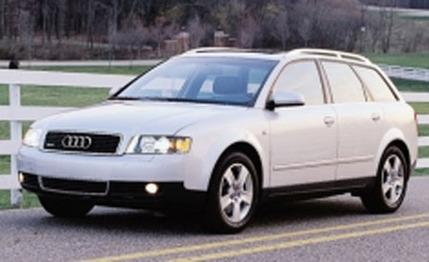 Short Take Road Test
Short Take Road Test
The gluttons for amusement toiling at this hallowed herald may appear to take their red-misted eyes off the ball from time to time when awarding comparison-test wins to grin-generating vehicles that come up a little short in areas that seem vital to their intended missions. Such as when a big macho Land Rover loses an off-roader test to a frilly Acura, or when a spry Audi "A4 with a knapsack" Avant beats out a big-box Volvo V70 in a station wagon match. What can we say? We print all the nitty-gritty specs so you can decide whether hauling 30-percent-more beer cases is more important than cornering and braking 10 percent harder, and then we tend to award more votes to nimble Acuras and Audis.
Nevertheless, utility is crucial in wagons, so when early reports of the newly enlarged Audi A4 started dribbling in, we hoped to find a silver lining of improved cargo capacity inside the anticipated dark cloud of weight gain and lost agility. It stood to reason: Relative to its predecessor, the new car appeared to have been squared off a bit in back, plus it grew 1.3 inches wider and 2.2 inches longer on axles that were 1.7 inches farther apart. Surely the beer-case count would go up, too, right?
Wrong.
In fact, the new car lost 3.5 cubic feet with the rear seats up, 3.1 with them folded (leaving 27.8 and 60.6 cubes). That's well shy of the Swedish competition (the V70 measures 38/72, and the more directly competing V40 carries 34/68). At least the A4 Avant can out-tote its chief rival, the 26/60-cubic-foot BMW 325i wagon.
Turns out the added length was used to move the rear seat aft, yielding a noticeable inch-plus of needed legroom but crowding the cargo area somewhat. The load platform in back was also raised to provide room for a full-size spare on a matching alloy rim and to provide for a shallow underfloor stowage space.
The good news is that some of what was lost in volume was made up in cargo-area features. There's a standard dense-screen retractable partition that can confine pets and projectiles to the cargo hold-with the rear seatback up or folded. There are also bag hooks, elastic straps on the side panels to restrain small parcels, tie-down hooks, and a retractable cargo shade that is much less fiddly than most to hook into the D-pillars.
From the cargo screen forward, the Avant is pure 10Best-winning A4. The wagonizing operation adds 110 pounds, according to Audi's scales, which is less than three percent of our test car's staggering 3912-pound total, so the sedan's dynamic character (which remains quite charming despite its extra heft) is largely undiminished, and straight-line performance should be nearly equivalent (we've never tested a Tiptronic sedan). Our 7.7-second 0-to-60-mph run was about a second slower than that of our last six-speed 3.0 Quattro sedan and just 0.3 second slower than that comparo-winning 1998 A4 Avant 2.8 Quattro's with a five-speed stick. Clearly, the jump from 190 to 220 horsepower offset most of the 506 pounds the enlarged wagon gained. Skidpad stick and braking figures are right on top of the old wagon's ("Fast Freighters" December 1997): 0.80 g and 180 feet from 70 mph, and neither car had the sport suspension. And as possible evidence of a free lunch, highway fuel economy improves a point to 25 mpg.
If we were shopping Audi for our next C/D Boss Wagon, we'd certainly choose the standard six-speed manual, but the five-speed Tiptronic abets sporty driving nicely, even in automatic mode. If the control inputs indicate a red mist coming over the driver, it hangs onto revs and downshifts during braking. Even when the mist clears, the torque converter locks up early and stays locked longer, providing the feel of a manual transmission in its application of engine braking at the slightest lift of the throttle.